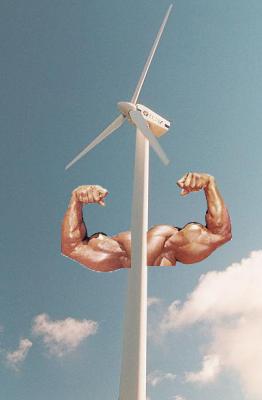Global wind power capacity rose 27 percent in 2007 to more than 94,100 megawatts, led by capacity additions in the European Union, the United States, and China, according to the latest Vital Sign Update from the Worldwatch Institute.
New wind installations were second only to natural gas in the United States as an additional source of power capacity and were the leading source of new capacity in the EU. Thats right, more wind power was installed than coal, or oil. Natural gas watch out, your next. In China, the estimated 3,449 megawatts of wind turbines added last year propelled China past the government’s ambitious wind power target for 2010.
 The addition of a record-breaking 5,244 megawatt (enough to power 4.5 million U.S. homes) of wind capacity in the United States in 2007 was driven by the federal production tax credit and by renewable energy mandates in 25 states and the District of Columbia. The nation’s wind capacity now totals 16,818 megawatts, second only to Germany. The production tax credit is set to expire at the end of this year. “If Congress acts quickly to extend the tax credit, the U.S. will likely pass Germany to lead the world in wind power within the next two years,†according to Janet Sawin, a Worldwatch senior researcher and the author of the update.
The addition of a record-breaking 5,244 megawatt (enough to power 4.5 million U.S. homes) of wind capacity in the United States in 2007 was driven by the federal production tax credit and by renewable energy mandates in 25 states and the District of Columbia. The nation’s wind capacity now totals 16,818 megawatts, second only to Germany. The production tax credit is set to expire at the end of this year. “If Congress acts quickly to extend the tax credit, the U.S. will likely pass Germany to lead the world in wind power within the next two years,†according to Janet Sawin, a Worldwatch senior researcher and the author of the update.
Germany remains the world leader in wind power capacity, with almost 24 percent of the global total (22,247 megawatts), but it experienced a lackluster year in 2007. Still, renewable energy resources now generate more than 14 percent of Germany’s electricity needs, with about half of this coming from wind. Spain led Europe in new installations in 2007, now ranking third worldwide in total wind capacity (15,145 megawatts). France, Italy, Portugal, and the United Kingdom all experienced significant growth last year as well. In all, EU wind power capacity rose 18 percent in 2007, and the region is home to 60 percent of global installed capacity.
China was the biggest surprise in 2007. Barely in the wind business three years ago, China trailed only the United States and Spain in new wind installations in 2007, and ranked fifth in total installed capacity (6,050 megawatts). However, an estimated one-fourth of this capacity remains unconnected to the grid due to planning problems. This could be yet another example of China doing things so fast that they are unable to plan for what happens.
This explosive growth occurred amidst a backdrop of serious turbine shortages, a challenge that is expected to be ameliorated sometime in 2009. Despite higher costs due to turbine shortages, rising material costs, and increased manufacturing profitability, wind power remains competitive with new natural gas plants, and all conventional power plants have seen similar construction-cost increases. Wind power will become increasingly competitive with coal as more countries put a commodity price on carbon.
The global wind market was worth an estimated $36 billion in 2007, accounting for almost half of all investment in new renewable electric and heating capacity. As many as 200,000 people are now employed in the wind industry worldwide. These numbers will only rise in the coming years as the EU seeks to meet aggressive 2020 targets for renewables and as the United States, China, and other nations realize their enormous potential for wind power.
“The wind industry has consistently blown by past projections,†says Sawin, “and it will likely continue to do so for years to come.†Lets hope the U.S. continues to take advantage of this wonderful economic and ecological energy source.
Just wondering if one of those mega gigantic magnetic wind turbines has been built by anyone yet? I know China was supposed to start building those but I have not seen anything yet.
Don’t forget to mention Prince Edward Island! The smallest province in Canada derives 18% of it’s electricity from wind!